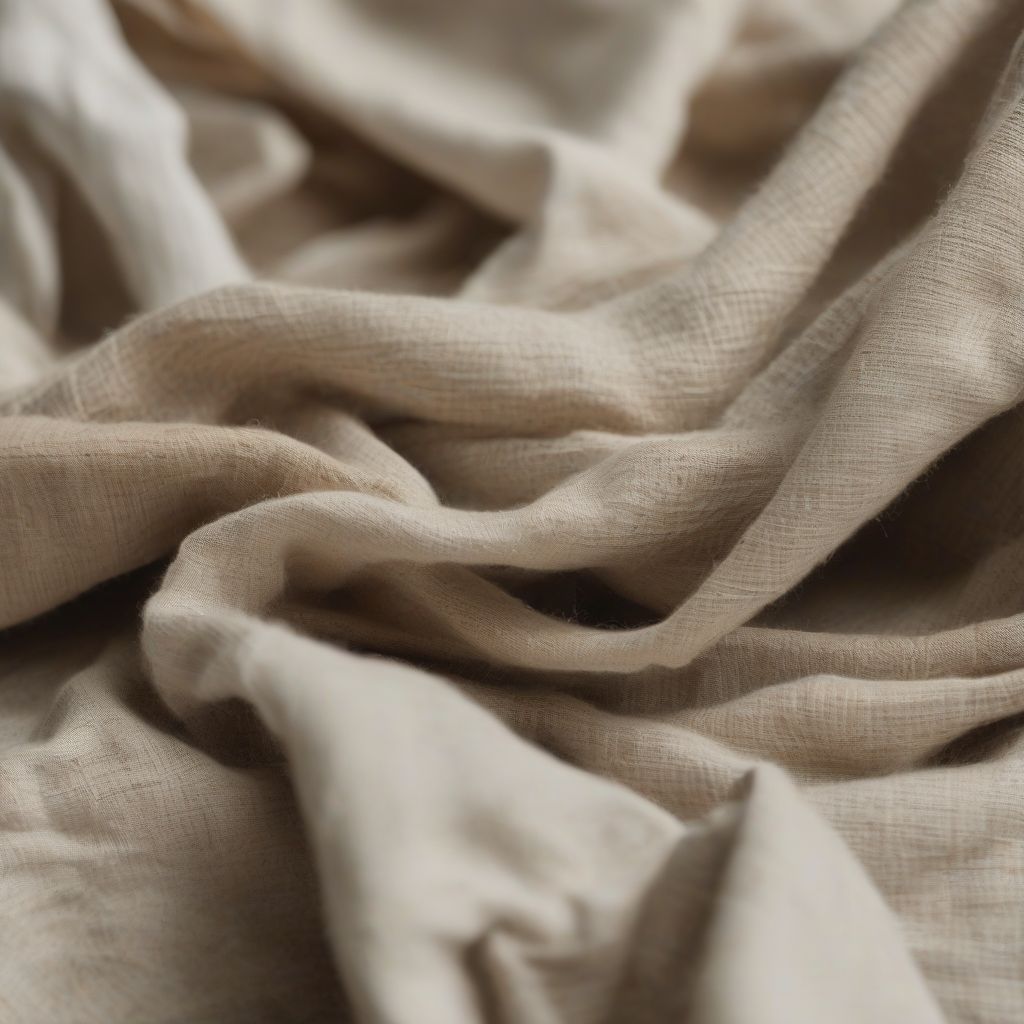Imagine slipping into a shirt that’s not only stylish but also kind to the planet. That’s the power of eco-friendly textiles! But with so many fabrics and buzzwords out there, it can feel overwhelming to navigate the world of sustainable fashion. Fear not! This guide is here to equip you with the knowledge to confidently identify and source eco-friendly textiles, turning your wardrobe into a force for good.
Understanding Eco-Friendly Textiles: What Does It Really Mean?
Before we dive into the specifics, let’s define what makes a textile truly eco-friendly. It goes beyond just being made of natural fibers. We’re looking for fabrics that tick these boxes:
- Sustainable Sourcing: Think responsibly managed forests for wood-based fibers, organic farming practices for cotton, and recycled materials that give waste a new life.
- Ethical Production: Fair wages, safe working conditions, and minimal environmental impact throughout the manufacturing process are non-negotiables.
- Durability and Biodegradability: Eco-friendly textiles are designed to last, reducing the need for frequent replacements. And when their time comes, they should decompose naturally without harming the environment.
Decoding Fabric Labels: Your Guide to Eco-Friendly Choices
Shopping for sustainable fabrics starts with understanding those little tags we often overlook. Here’s a breakdown of common eco-friendly materials to look for:
Natural Wonders: Plant-Based Heroes
- Organic Cotton: Grown without harmful pesticides and fertilizers, organic cotton is a breathable and biodegradable superstar. Look for certifications like GOTS (Global Organic Textile Standard) and OCS (Organic Content Standard).
- Linen: Made from flax, linen is known for its durability, breathability, and natural resistance to bacteria. It requires less water and pesticides to grow compared to conventional cotton.
- Hemp: This fast-growing wonder requires minimal water and pesticides. Hemp fabric is strong, breathable, and gets softer with each wash.
Recycled and Upcycled: Giving Materials a Second Life
- Recycled Cotton: Made from pre-consumer cotton scraps or post-consumer garments, this reduces waste and the need for virgin resources.
- Recycled Polyester (rPET): Primarily made from plastic bottles, rPET helps reduce plastic waste and requires less energy to produce than virgin polyester.
- Econyl: This innovative fabric is made from recycled nylon waste like fishing nets and industrial plastic. It can be recycled infinitely without losing quality.
Beyond the Basics: Exploring Other Sustainable Options
- Tencel (Lyocell): Derived from sustainably harvested wood pulp, Tencel is known for its softness, drape, and moisture-wicking properties. Look for certifications like FSC (Forest Stewardship Council).
- Peace Silk (Ahimsa Silk): Unlike conventional silk production, which harms silkworms, Peace Silk allows the moths to emerge from their cocoons before the silk is harvested.
- Bamboo: While often touted as sustainable, bamboo fabric requires heavy processing. Opt for mechanically processed bamboo or look for certifications like OEKO-TEX Standard 100 to ensure responsible manufacturing.
Sourcing Eco-Friendly Textiles: Where to Find Your Sustainable Style
You’ve got the knowledge, now let’s find those eco-friendly gems! Here’s where to source sustainable fabrics and garments:
- Ethical Brands: Many brands are making waves in sustainable fashion. Look for transparency in their supply chains, certifications, and a commitment to ethical practices.
- Local Designers and Artisans: Supporting local often means supporting sustainable practices. Check out craft fairs, farmer’s markets, or search online for sustainable fashion designers in your area.
- Vintage and Secondhand Shops: Give pre-loved clothes a new life and reduce textile waste by shopping vintage or secondhand. It’s like treasure hunting for sustainable style!
- Online Marketplaces: Numerous online platforms specialize in eco-friendly fashion. Look for detailed product descriptions and certifications to ensure authenticity.
 Eco-Friendly Textiles
Eco-Friendly Textiles
5 Questions to Ask When Sourcing Eco-Friendly Textiles
- What is the fabric composition? Look for natural, recycled, or upcycled materials.
- Where and how is the fabric sourced? Seek out certifications like GOTS, OCS, FSC, and OEKO-TEX.
- What are the brand’s ethical and sustainability practices? Check for fair labor certifications, transparent supply chains, and commitments to reducing environmental impact.
- How durable is the fabric, and how should it be cared for? Durable fabrics that can be easily cared for have a longer lifespan.
- What is the brand’s return policy? Ensure you can return or exchange items if they don’t meet your expectations.
Conclusion: Weaving a More Sustainable Future
Choosing eco-friendly textiles is about more than just following a trend—it’s about making conscious decisions that align with our values. By understanding the impact of our choices and supporting brands that prioritize people and the planet, we can create a more sustainable future for fashion. So, embrace your inner eco-warrior and embark on your journey toward a wardrobe that reflects your commitment to a healthier planet!
Ready to transform your closet into a haven of sustainable style? Share your thoughts, tips, and favorite eco-friendly brands in the comments below!
[amazon bestseller=”sustainable fashion”]
